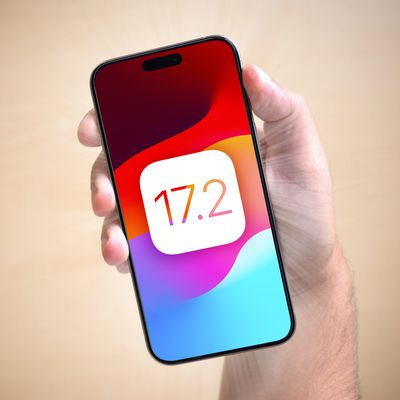Apple today announced it has expanded its Self Service Repair program to cover the iPhone 15 lineup and Mac models powered by M2 chips, including the 14- and 16-inch MacBook Pro, the 15-inch MacBook Air, Mac mini, Mac Pro, and Mac Studio.

Apple also said that Self Service Repair is now available for Apple users in 24 additional European countries, including Croatia, Denmark, Greece, Netherlands, Portugal, and Switzerland. With this latest expansion, Self Service Repair now supports 35 Apple products in 33 countries and 24 languages.
Additionally, Apple Diagnostics for Self Service Repair is available today in the U.S. for iPhones and Macs, with availability in Europe to come next year. Intended for users with the knowledge and expertise to repair Apple devices, Apple Diagnostics troubleshooting sessions gives customers the same ability as Apple Authorized Service Providers and Independent Repair Providers to test devices for optimal part functionality and performance, as well as identify which parts may need repair.
Launched in 2022, Apple's Self Service Repair program is designed to allow Apple device owners to do their own repairs in their homes using Apple parts, repair manuals, and tools.
To conduct a repair, customers first need to review the repair manual for their product and the specific repair on Apple's support website. After, they'll be able to order the required parts and tools from the Self Service Repair Store and begin the repair.
The program is part of Apple's efforts to "further expand access to repairs," according to the company. That said, Apple cautions that the "vast majority" of customers should still visit a professional repair provider, such as an Apple Store, to ensure their devices are repaired safely and reliably.























Top Rated Comments
Let’s talk when Apple give up on serializing parts (it is ridiculous to have FaceID disabled when screen replacement is done), allowing SSD replacements and making parts widely available with no string attached (such as making parts available on iFixit, like Google and Motorola is doing).
<cough>frame.work</cough>
If you run out of space, delete some crap or buy the right amount to start with. I've got less than 100Gb of stuff and have been on Earth for at least 5 decades...
[LIST=1]
* I initially scrimped and got a 4GB model because Apple (as always) wanted £silly for 8GB.
* A few years after purchase, decent-sized SSDs suddenly became affordable (true for all platforms) - which was probably the most significant performance boost that decade.
...otherwise, after 3-5 years use, newer laptops are better in so many respects - CPU, Graphics, Display, I/O tech, that the only motivation for upgrading rather than replacing is "saving the planet" (Making do without the newest shiny for a couple of years probably saves more penguins and I'd rather re-purpose/donate the old computer as a working system than chuck half of it in the bin and upgrade). Even when I've built completely modular PC towers, after a few years bringing them "up to spec" would have meant replacing virtually everything apart from maybe the case.
The main reason for aftermarket upgrades on Macs is Apple's pricing strategy that pushes people to scrimp on RAM and SSD - If I were buying a PC laptop, I'd just get plenty of RAM and SSD on day one. The Framework offers a few other interesting options: the I/O port modules (but ultimately, they're functionally just USB-C dongles - you won't be adding next-generation I/O that way, esp. without Thunderbolt) and now upgradeable GPUs (but reliant on new GPUs being released in Framework format).
Still, Framework is a cool design and, if I were buying a PC laptop, I might be tempted by that alone, I'm just not sure of the practicality.